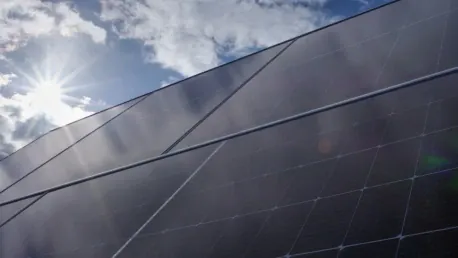In the face of rising energy demands and a pivotal transition from fossil fuels to renewable energy, Illinois’ electric grid faces critical challenges that must be addressed to ensure future reliability and stability. The state is under pressure to meet these demands and pivot its energy approach, all while adhering to both environmental and economic goals.
Renewable Energy Challenges
Ambitious sustainability objectives have been set by Illinois through the Climate and Equitable Jobs Act (CEJA), aiming to decarbonize its electric grid by 2045. However, Illinois is currently lagging behind in its renewable energy targets, due in part to protracted interconnection processes and insufficient funding. These administrative delays and financial uncertainties pose significant risks to the timely integration of renewable energy projects. Falling short on these targets could undermine the state’s progress toward a greener future.
Growing Energy Demand
The urgency to develop additional renewable generation and storage capacity is intensifying as Illinois experiences a notable increase in electricity demand. This surge is fueled primarily by the proliferation of data centers and industrial expansion within the state. The state’s energy infrastructure must adapt rapidly to accommodate this growing demand while moving away from fossil fuels. Without this swift adaptation, the risk of energy shortfalls and increased utility costs becomes more imminent.
Grid Reliability and Affordability
Experts emphasize that failure to address potential energy shortfalls could lead to higher utility bills and rolling blackouts, adversely affecting Illinois residents. The state must focus on incentivizing renewable energy and energy storage solutions to maintain reliable and affordable electricity supply. Ensuring the grid’s reliability involves not just increasing renewable energy capacity but also integrating advanced energy storage systems to manage the intermittent nature of renewable sources effectively.
Legislative Support and Regulatory Reforms
Immediate action is deemed necessary to boost renewable energy adoption and develop robust energy storage infrastructure. Legislative support and regulatory reforms are considered vital for the rapid deployment and integration of these technologies. Structural inefficiencies and delays in federal grid regulation and interconnection processes hamper the pace at which new renewable projects come online, necessitating urgent reform to streamline the approval and construction of essential infrastructure like transmission lines.
Energy Storage Solutions
Ensuring a consistent electricity supply during peak demand times points to large-scale battery storage as a key solution. Implementing such energy storage could address the variability inherent in renewable energy generation. Recent legislative proposals aim to treat energy storage with the same priority as renewable energy, potentially speeding up its development and integration. This would be a significant step toward achieving a sustainable and stable electric grid.
Grid Regulation and Capacity Market Realities
Another layer of complexity involves the undercounting of future electricity availability, which led to a surge in capacity prices. This flawed forecasting underscores the necessity for regulatory adjustments. Grid operators such as PJM are grappling with significant backlogs, which further delay the advancement of renewable projects. To address these inefficiencies, Illinois must align legislative and regulatory frameworks to support swift infrastructure development.
Conclusion
Illinois is currently grappling with significant challenges in maintaining the reliability and stability of its electric grid as the state transitions from fossil fuels to renewable energy sources. This shift is imperative due to the rising energy demands and the pressing need to address environmental and economic goals. The transition necessitates a carefully planned approach to ensure the grid can handle increasing electricity consumption without compromising its efficiency.
The growing use of technologies like electric vehicles and energy-efficient appliances has led to a higher demand for electricity. To meet these demands, Illinois must enhance its infrastructure to integrate renewable energy sources like wind and solar power. This includes upgrading transmission lines and energy storage solutions to ensure that renewable energy can be reliably delivered to consumers.
Furthermore, Illinois must also consider the economic implications of this transition. Investing in renewable energy not only helps the environment but also creates jobs and stimulates economic growth. By addressing these challenges, Illinois can pave the way for a sustainable and reliable energy future.









